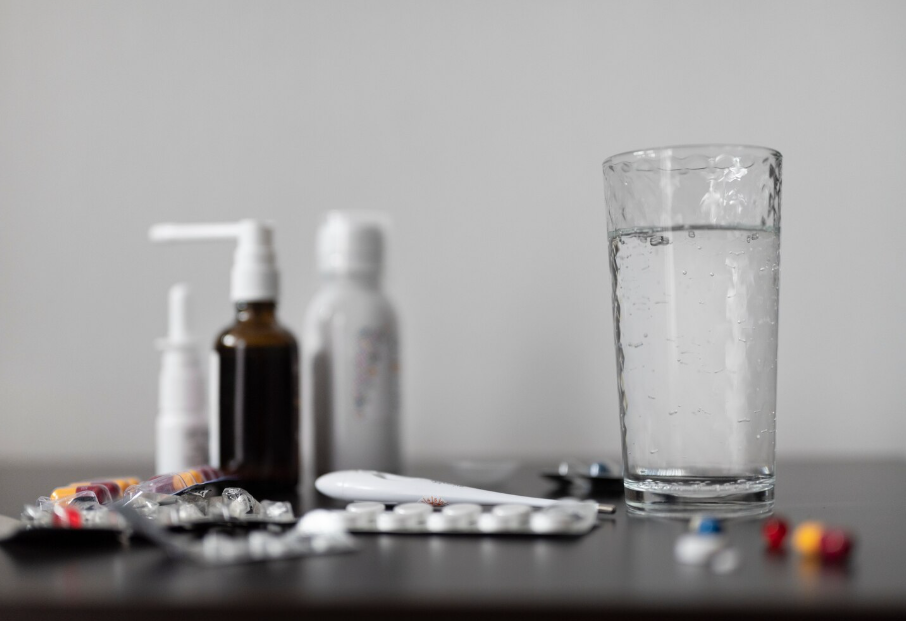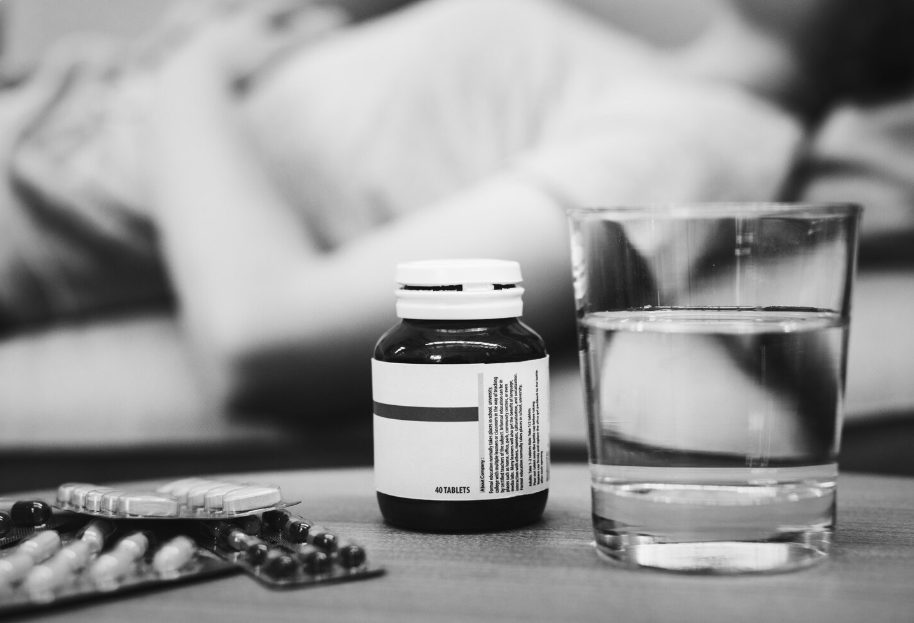The Dangers of Pain Killers and Alcohol
When pain killers and alcohol are combined, the risks can escalate to dangerous levels. It is crucial to understand these risks and why the combination of pain killers and alcohol can be fatal.

Understanding the Risks
Pain killers, also known as analgesics, are medications commonly used to alleviate pain. They work by targeting the body's pain receptors, providing relief to individuals experiencing discomfort. However, pain killers can have potent effects on the central nervous system (CNS) when combined with alcohol.
Alcohol, a depressant substance, also affects the CNS. It slows down brain activity, impairs judgment, and affects coordination. When pain killers and alcohol are consumed together, their combined depressant effects can intensify, leading to severe consequences.
Why Pain Killers and Alcohol Can be Fatal
The combination of pain killers and alcohol can be fatal due to several factors. Firstly, both substances can cause respiratory depression, meaning they slow down breathing. When taken together, this effect can be intensified, potentially leading to respiratory failure, coma, or even death.
Secondly, pain killers and alcohol can impair cognitive function and decision-making abilities. This can increase the likelihood of risky behaviors such as excessive consumption of alcohol or taking higher doses of pain killers than prescribed. These actions can further compromise the body's ability to function properly and increase the risk of overdose.
Moreover, pain killers and alcohol can have additive effects on liver toxicity. Both substances are metabolized by the liver, and excessive or prolonged use can strain this vital organ. The combination may lead to liver damage, including hepatitis, cirrhosis, or liver failure.
It is essential to be aware of the potential dangers associated with the interaction between pain killers and alcohol. If you or someone you know is struggling with addiction to pain killers and alcohol, seeking professional help is crucial.
Understanding the risks and consequences of combining pain killers and alcohol is an important step in promoting safe and responsible consumption. It is crucial to prioritize one's health and well-being by avoiding the simultaneous use of these substances and seeking help if addiction is present.
The Effects of Pain Killers and Alcohol
When pain killers and alcohol are combined, their effects on the body can be particularly dangerous. Understanding these effects is essential to grasp the potential risks and the increased likelihood of overdose.
Depressant Effects on the Central Nervous System
Both pain killers and alcohol are classified as depressants, meaning they slow down the activity of the central nervous system. Pain killers, such as opioids, work by binding to specific receptors in the brain and spinal cord, reducing the perception of pain. Alcohol, on the other hand, affects the brain by enhancing the effects of a neurotransmitter called gamma-aminobutyric acid (GABA), which has a calming effect.
When pain killers and alcohol are consumed together, their depressant effects are amplified. This can lead to a more profound sedative effect on the central nervous system, resulting in drowsiness, slowed breathing, impaired coordination, and decreased cognitive function. The combination of these substances can be particularly dangerous, as it heightens the risk of overdose and other severe health consequences.
Increased Risk of Overdose
Combining pain killers and alcohol significantly increases the risk of overdose. Both substances can individually cause respiratory depression, which can lead to potentially fatal consequences. When consumed together, their combined depressant effects can further suppress the respiratory system, making it more difficult for the body to receive the necessary oxygen.
Moreover, pain killers and alcohol can impair judgment, leading to poor decision-making and an increased likelihood of taking higher doses of pain killers than prescribed or drinking more alcohol than intended. This can push the body beyond its limits and increase the risk of overdose.
It's important to note that the risk of overdose is not limited to intentional misuse. Even when pain killers are taken as prescribed and alcohol is consumed in moderation, the combination can still pose risks due to the way the substances interact in the body.
Understanding the effects of pain killers and alcohol is crucial in preventing potential harm. If you or someone you know is struggling with addiction or the misuse of pain killers and alcohol, seeking help from a healthcare professional or a specialized addiction treatment center is vital.
Signs and Symptoms of Overdose
Recognizing the signs and symptoms of a pain killers and alcohol overdose is crucial for prompt intervention and potentially saving a life. Overdosing on pain killers, such as opioids, and consuming alcohol simultaneously can have serious consequences. Understanding the physical, behavioral, and psychological symptoms associated with an overdose is vital.
Physical Symptoms
Physical symptoms of a pain killers and alcohol overdose may include:
- Slowed or shallow breathing: Both pain killers and alcohol act as depressants on the central nervous system, which can lead to respiratory depression. This manifests as slow, shallow, or labored breathing.
- Extreme drowsiness or sedation: Excessive consumption of pain killers and alcohol can result in extreme drowsiness, making it difficult for the individual to stay awake or respond to stimuli.
- Confusion or disorientation: Overdose can cause confusion, disorientation, and impaired cognitive function, making it challenging for the person to think clearly or make rational decisions.
- Nausea and vomiting: Overdosing on pain killers and alcohol may cause nausea and vomiting, which can further complicate the situation and increase the risk of aspiration.
- Blue lips or fingertips: In severe cases, an overdose can lead to a lack of oxygen supply, resulting in cyanosis (bluish discoloration) of the lips, fingertips, or extremities.
Behavioral and Psychological Symptoms
In addition to physical symptoms, behavioral and psychological changes may also indicate a pain killers and alcohol overdose:
- Extreme dizziness or unsteadiness: Overdose can cause severe dizziness or unsteadiness, making it difficult for the person to maintain balance or walk properly.
- Severe mood swings: Overdosing on pain killers and alcohol can lead to rapid changes in mood, ranging from extreme elation to profound sadness or irritability.
- Agitation or aggression: Some individuals may become agitated or exhibit aggressive behavior when experiencing an overdose.
- Loss of consciousness: In severe cases, an overdose can result in loss of consciousness, where the person becomes unresponsive and cannot be awakened.
It's important to note that the signs and symptoms of an overdose may vary depending on the individual and the specific substances consumed. If you suspect someone is experiencing an overdose, it is crucial to seek immediate medical attention by calling emergency services. Remember, every moment counts when it comes to saving a life.
Understanding the dangers and being aware of the signs and symptoms can help prevent tragic outcomes associated with pain killers and alcohol overdoses.
Seeking Help and Treatment
When it comes to the dangers of pain killers and alcohol overdose, seeking help and treatment is of utmost importance. It is crucial to recognize the severity of the situation and take the necessary steps to address the addiction and potential health risks associated with the combination of these substances.
Importance of Seeking Medical Attention
If you or someone you know is struggling with the misuse of pain killers and alcohol, it is vital to seek medical attention as soon as possible. Overdosing on pain killers and alcohol can have serious consequences and may even be fatal. Seeking medical help ensures that you receive the necessary care and support to manage the physical and psychological effects of addiction.
Medical professionals can assess your situation, provide appropriate treatment, and monitor your progress. They can also help address any underlying health conditions or complications that may have arisen from the misuse of these substances. Remember, seeking medical attention is not a sign of weakness but a courageous step towards recovery.
Treatment Options for Addiction
There are various treatment options available for individuals struggling with pain killer and alcohol addiction. The most suitable approach will depend on the individual's specific needs and circumstances. Some common treatment options include:
- Detoxification: A medically supervised detoxification process helps individuals safely manage withdrawal symptoms. It involves gradually reducing the substances in the body and providing necessary support to minimize discomfort and complications.
- Inpatient Rehabilitation: Inpatient rehabilitation programs provide a structured and supportive environment for individuals to focus on their recovery. These programs typically involve a combination of therapy, counseling, and support groups to address the underlying causes of addiction and develop healthy coping mechanisms.
- Outpatient Programs: Outpatient programs offer flexibility for individuals who cannot commit to full-time residential treatment. They provide access to counseling, therapy, and support groups while allowing individuals to continue with their daily responsibilities.
- Support Groups: Support groups such as Alcoholics Anonymous (AA) and Narcotics Anonymous (NA) offer a community of individuals with similar experiences. These groups provide a supportive environment for sharing and learning from others who have overcome addiction.
- Therapy and Counseling: Individual therapy and counseling sessions can help address the root causes of addiction and develop strategies for relapse prevention. Therapists and counselors provide guidance, support, and coping mechanisms to help individuals overcome their addiction.
Remember, recovery is a journey, and everyone's path is different. It's important to consult with healthcare professionals or addiction specialists to determine the most appropriate treatment plan for your specific situation.
By seeking help and treatment, individuals struggling with pain killer and alcohol addiction can take the first steps towards recovery and lead a healthier, more fulfilling life.
Preventing Pain Killer and Alcohol Overdose
Preventing pain killer and alcohol overdose is of utmost importance to ensure the well-being and safety of individuals struggling with addiction. By implementing education and awareness initiatives and employing harm reduction strategies, we can help mitigate the risks associated with the combination of pain killers and alcohol.
Education and Awareness
Education plays a vital role in preventing pain killer and alcohol overdose. It is crucial to provide individuals with accurate and comprehensive information about the potential dangers and risks associated with the concurrent use of these substances. By increasing awareness, individuals can make informed decisions and better understand the potential consequences of their actions.
Key topics that should be addressed in education and awareness campaigns include:
- Pain killers and alcohol interaction: Educate individuals about the interactions between pain killers and alcohol, highlighting the enhanced depressant effects and increased risk of overdose.
- Mixing pain killers and alcohol: Emphasize the dangers of mixing pain killers and alcohol, and the potential for adverse health effects.
- Alcohol and pain medication interactions: Provide information on the specific interactions between alcohol and different types of pain medications, including the potential for liver damage and other negative health outcomes.
- Pain relievers and alcohol consumption: Educate individuals about the risks associated with consuming alcohol while taking pain relievers, such as increased sedation and impaired judgment.
By increasing education and awareness, we can empower individuals to make informed choices and reduce the likelihood of pain killer and alcohol overdose.
Harm Reduction Strategies
In addition to education and awareness, implementing harm reduction strategies is crucial in preventing pain killer and alcohol overdose. These strategies aim to minimize the risks associated with substance use and provide support to individuals struggling with addiction. Some effective harm reduction strategies include:
- Safe consumption guidelines: Educate individuals about safe consumption guidelines, such as avoiding the simultaneous use of pain killers and alcohol or using them in moderation. Encourage individuals to consult healthcare professionals for personalized guidance.
- Regular check-ins: Establish regular check-ins with healthcare professionals or support groups to monitor and manage substance use. These check-ins can provide opportunities for individuals to discuss their concerns, receive guidance, and access additional resources.
- Access to naloxone: Naloxone is an opioid overdose reversal medication that can be a life-saving intervention in cases of pain killer overdose. Promote the availability and accessibility of naloxone to individuals at risk of overdose, their loved ones, and the community at large.
- Treatment and support services: Advocate for and provide access to addiction treatment and support services. This includes counseling, therapy, rehabilitation programs, and support groups that can help individuals address the underlying causes of their addiction and develop healthier coping mechanisms.
By implementing these harm reduction strategies, we can create a supportive environment that promotes safer substance use practices and reduces the risk of pain killer and alcohol overdose.
Preventing pain killer and alcohol overdose requires a comprehensive approach that combines education, awareness, and harm reduction strategies. By empowering individuals with knowledge and support, we can help them make safer choices and reduce the potential for overdose and its devastating consequences.
Conclusion
Mixing painkillers and alcohol can have serious consequences. It can lead to liver damage, gastrointestinal bleeding, and even death. If you are taking painkillers, it is important to avoid alcohol or to drink it in moderation. Talk to your doctor or pharmacist if you have any questions or concerns about taking painkillers. Remember, your health and safety are always the top priority.


.jpg)





.png)
.png)
.png)
.png)